Roofing Companies Longton
Find top Roofing Companies in Longton
Receive multiple Roofing Company quotes for your project today! Compare profiles, reviews, accreditations, portfolio, etc... and choose the best deal.
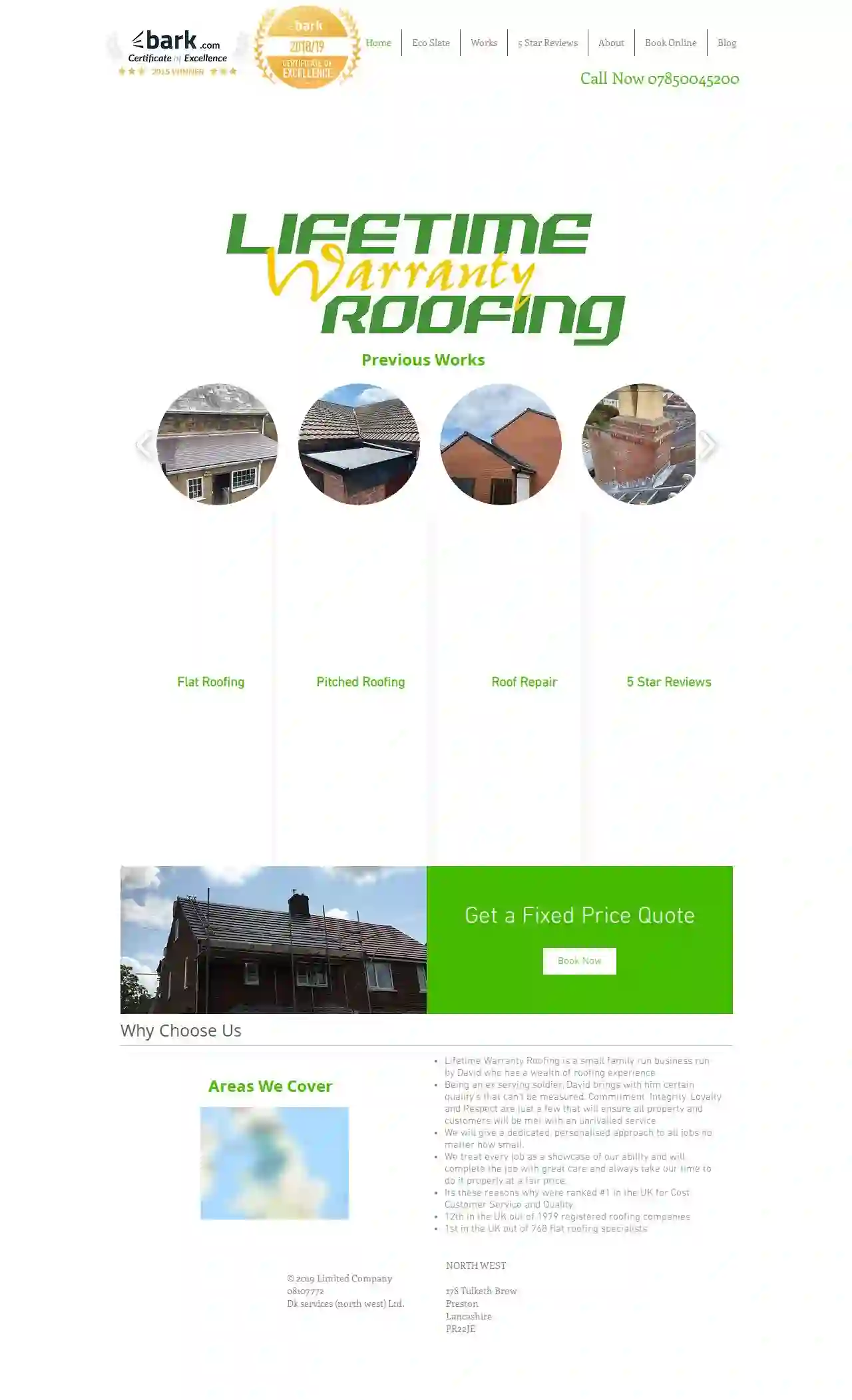
Liftime Warranty Roofing
53 reviews178 Tulketh Brow, Preston, PR22JE, GBLifetime Warranty Roofing is a small family run business run by David who has a wealth of roofing experience. Being an ex serving soldier, David brings with him certain quality's that can't be measured. Commitment, Integrity, Loyalty and Respect are just a few that will ensure all property and customers will be met with an unrivalled service. We will give a dedicated, personalised approach to all jobs no matter how small. We treat every job as a showcase of our ability and will complete the job with great care and always take our time to do it properly at a fair price. Its these reasons why were ranked #1 in the UK for Cost, Customer Service and Quality. 12th in the UK out of 1979 registered roofing companies 1st in the UK out of 768 flat roofing specialists © 2019 Limited Company 08107772 Dk services (north west) Ltd. NORTH WEST 178 Tulketh Brow Preston Lancashire PR22JE
- Services
- Why Us?
- Our Team
- Gallery
Get Quote
Iconic Roofing & Building Contractors
Burnley, GBIconic Roofing & Building Contractors Ltd is a leading and reputable Roofing Company serving the North West. Ever since we opened for business, we’ve taken a comprehensive approach to project management, providing our clients with a wide range of services to cover their needs. Get in touch today to learn more about what we can offer you and to receive your free estimate.
- Services
- Why Us?
- Gallery
Get Quote
P R Home Improvements
519 reviewsPreston, Lancashire, 123 Main Street, PR1 1AA, GBPR Roofing Services is a trusted roofing contractor in Preston, Lancashire, and surrounding areas. With over 25 years of experience, our expertly trained team provides high-quality construction and roof repair services. We offer a range of services, including roof repair, roof restoration, leadwork, soffits & fascias, dry ridge & dry verge, chimney repairs, cladding, and 4K drone roof surveys. Our team is dedicated to providing the best service to all customers, regardless of the roofing issue. We use only high-quality materials and offer honest advice and quality workmanship at every step. Contact us today for a free quotation or to learn more about our roofing services.
- Services
- Why Us?
- Our Team
- Testimonials
- Gallery
Get Quote
Fife Roofing / Freuchie
GBFife Roofing Network is a network of roofing professionals serving Freuchie and surrounding areas. We offer a wide range of roofing services for both residential and commercial properties, including roof repairs, flat roofing, guttering, fascias & soffits, and more. Our members are experienced and qualified roofers who are committed to providing high-quality workmanship and customer service. We understand that your roof is a vital part of your home or business, and we are dedicated to ensuring that it is properly protected. Whether you need a small repair or a complete roof replacement, our team can help. Contact us today for a free quote.
- Services
- Why Us?
- Gallery
Get Quote
Best Choice Roofers LTD
4.945 reviews2 Clarendon Rd, Lancaster, LA1 2DQ, GBAt Best Choice Roofers we specialise in slate & tiled roofing, flat roofing, chimney repairs & guttering. We work through North Lancashire & South Cumbria, Contact us for a FREE No-Obligation Estimate! We are fully insured, and our work is guaranteed. We have over 65+ 5-star reviews on Google throughout North Lancashire & South Cumbria.We provide all aspects of roofing from new slate, tile and flat roofs to roof and chimney repairs, roofline accessories and more. If you need a roofer in North Lancashire or South Cumbria, you can get in touch with our team for a FREE, no-obligation estimate!
- Services
- Why Us?
- Gallery
Get Quote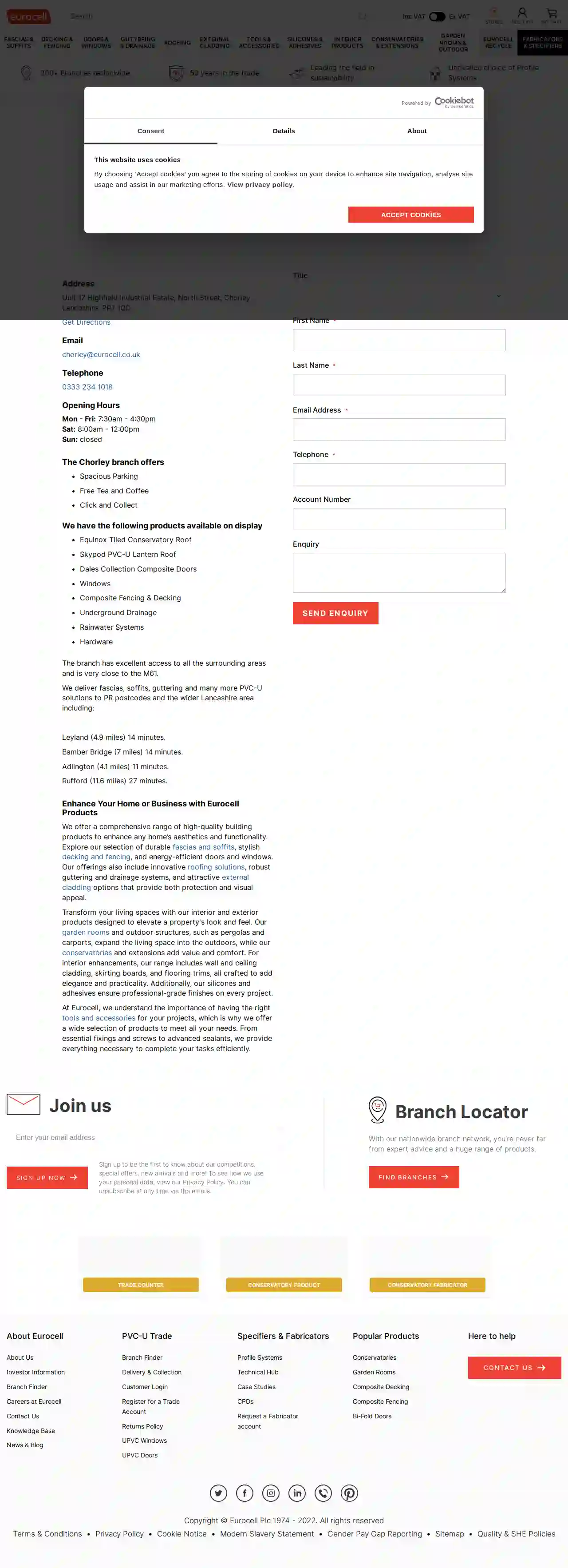
Eurocell Chorley
4.812 reviewsNot provided, GBEurocell is a leading manufacturer of PVCu building products, including windows, doors, conservatories, and roofline systems. With a wide range of products and services, Eurocell helps homeowners and builders create beautiful and functional living spaces. Our products are designed to be durable, low maintenance, and energy efficient, making them a great choice for any project.
- Services
- Why Us?
- Accreditations
- Gallery
Get Quote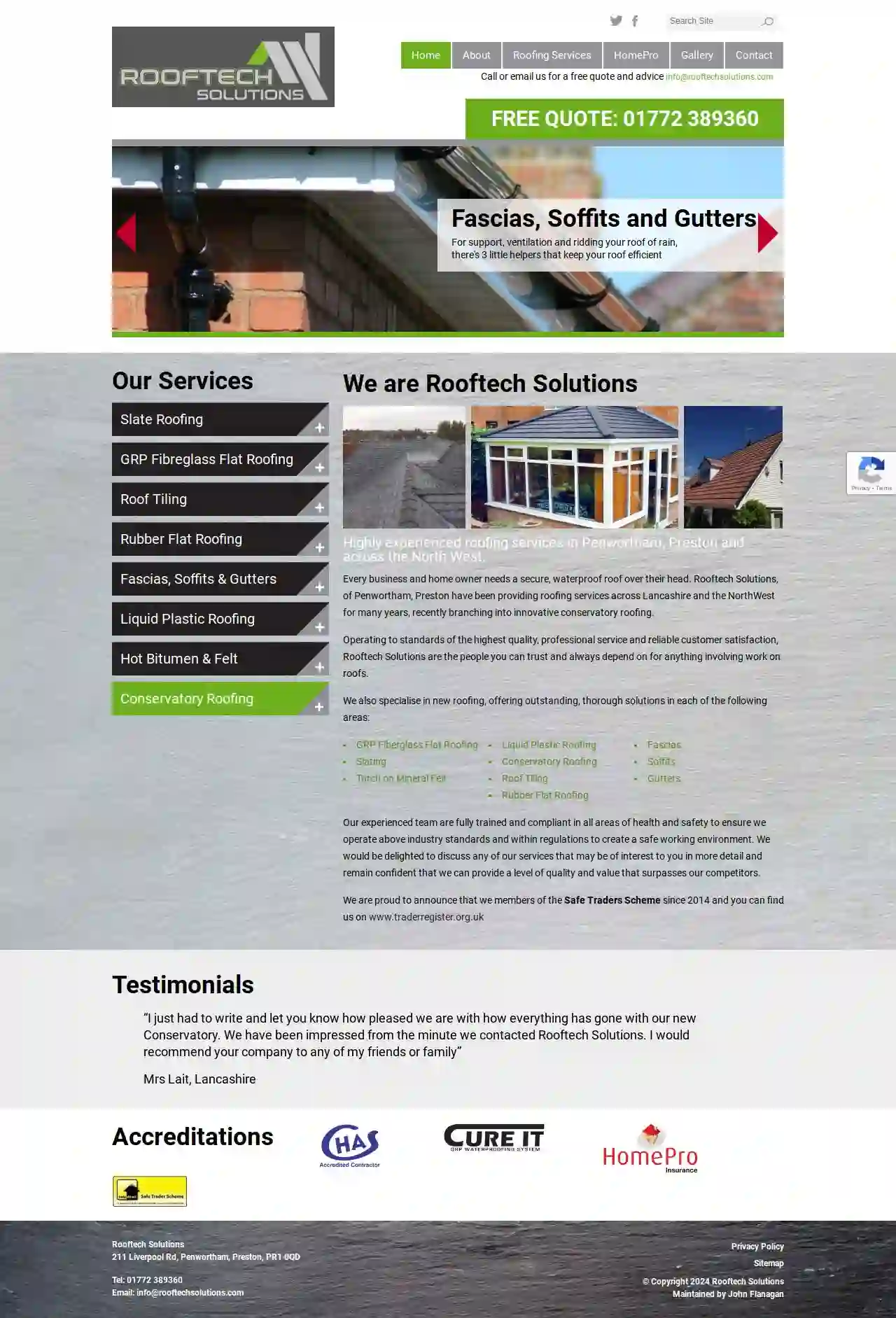
Rooftech Solutions
529 reviews211 Liverpool Rd, Penwortham, PR1 0QD, GBEvery business and home owner needs a secure, waterproof roof over their head. Rooftech Solutions, of Penwortham, Preston have been providing roofing services across Lancashire and the NorthWest for many years, recently branching into innovative conservatory roofing. Operating to standards of the highest quality, professional service and reliable customer satisfaction, Rooftech Solutions are the people you can trust and always depend on for anything involving work on roofs. We also specialise in new roofing, offering outstanding, thorough solutions in each of the following areas: GRP Fiberglass Flat Roofing Slating Torch on Mineral Felt Liquid Plastic Roofing Conservatory Roofing Roof Tiling Rubber Flat Roofing Fascias Soffits Gutters Our experienced team are fully trained and compliant in all areas of health and safety to ensure we operate above industry standards and within regulations to create a safe working environment. We would be delighted to discuss any of our services that may be of interest to you in more detail and remain confident that we can provide a level of quality and value that surpasses our competitors. We are proud to announce that we members of the Safe Traders Scheme since 2014 and you can find us on www.traderregister.org.uk
- Services
- Why Us?
- Accreditations
- Our Team
- Testimonials
- Gallery
Get Quote
SupaLite Tiled Roof Systems Ltd.
4.135 reviewsWalton Summit, Bamber Bridge, 180-181 Bradkirk Place, Preston, PR5 8AJ, GBSupaLite is a leading provider of conservatory roofs, offering a range of products and services to help homeowners create a beautiful and functional living space. With a fully insulated roof and a plastered inside ceiling, our roofs provide a comfortable and energy-efficient space that can be enjoyed year-round. Our team of experts is dedicated to helping homeowners achieve their vision, and we offer a range of options to suit different needs and budgets. Whether you're looking to replace an existing conservatory roof or build a new one, we have the expertise and products to help you achieve your goals.
- Services
- Why Us?
- Accreditations
- Our Team
- Testimonials
- Gallery
Get Quote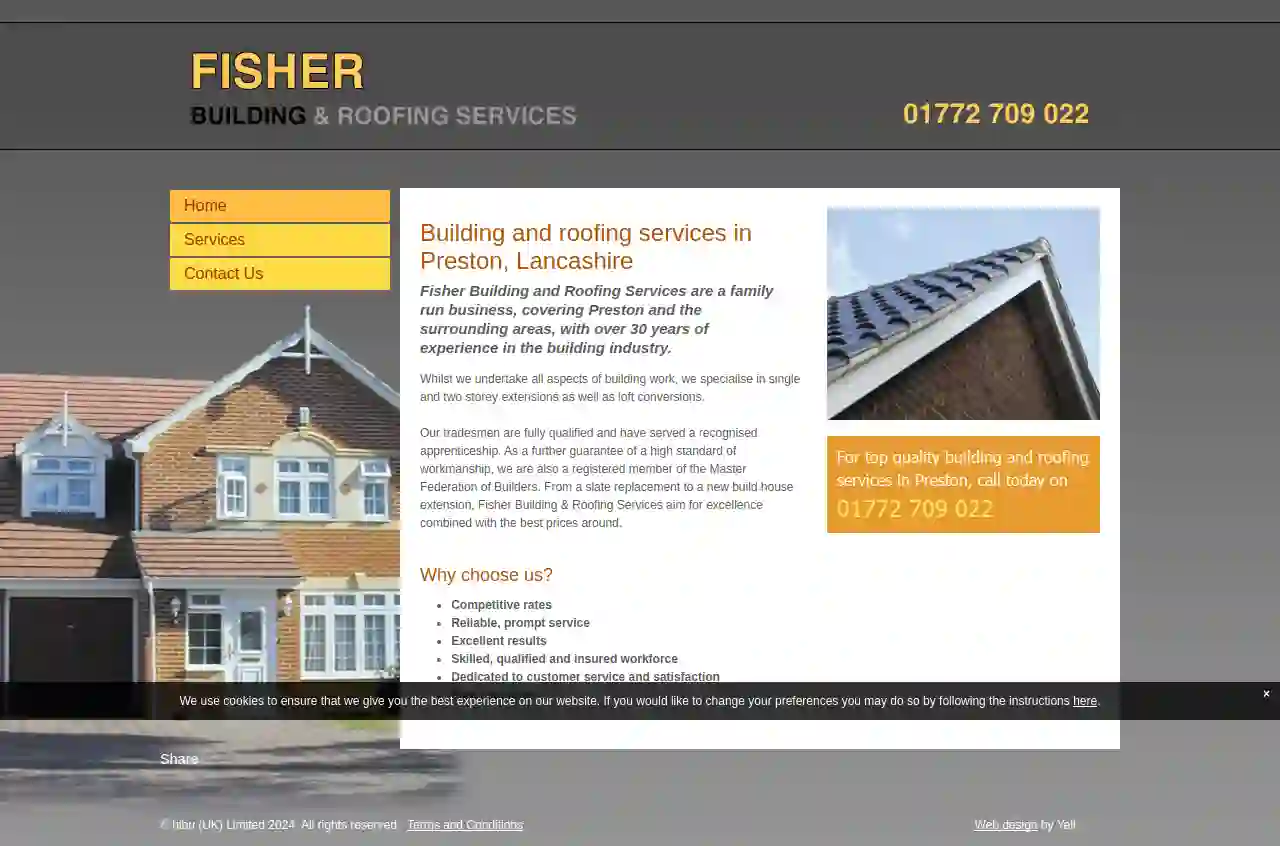
Fisher Building & Roofing
51 reviewsFulwood, Preston, 3 Westway, PR2 8BX, GBFisher Building and Roofing Services are a family run business, covering Preston and the surrounding areas, with over 30 years of experience in the building industry. Whilst we undertake all aspects of building work, we specialise in single and two storey extensions as well as loft conversions.Our tradesmen are fully qualified and have served a recognised apprenticeship. As a further guarantee of a high standard of workmanship, we are also a registered member of the Master Federation of Builders. From a slate replacement to a new build house extension, Fisher Building & Roofing Services aim for excellence combined with the best prices around.
- Services
- Why Us?
- Gallery
Get Quote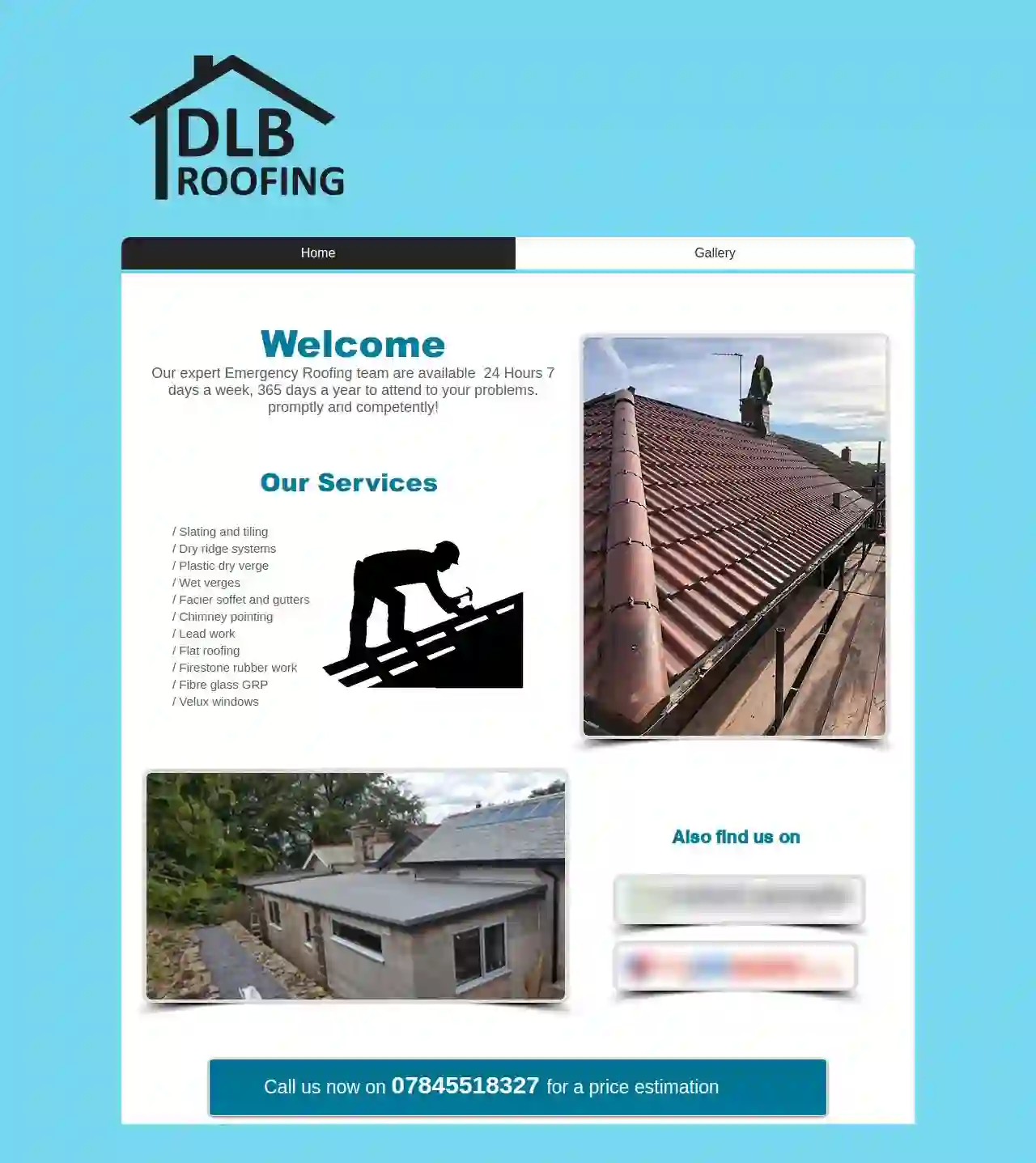
DLB Roofing
4.413 reviewsPreston, GBOur expert Emergency Roofing team are available 24 Hours 7 days a week, 365 days a year to attend to your problems. promptly and competently!
- Services
- Why Us?
- Gallery
Get Quote
Over 12,314+ Roofers on our directory
Our roofing pros operate in Longton and beyond!
Roofyng.co.uk has curated and vetted the Best Roofers near Longton. Find the most reliable business today.
Frequently Asked Questions About Roofing Companies
- Sagging or Pulling Away: Gutters that are sagging, pulling away from the house, or visibly damaged need repairs or replacement.
- Overflowing Water: If water overflows during rain, it indicates clogs or inadequate drainage.
- Visible Debris: Leaves, twigs, and other debris accumulated in the gutters obstruct water flow.
- Water Damage: Water stains or damage to siding or foundation near the gutters suggest overflow.
- Plant Growth: Plants or moss growing in the gutters indicate standing water and the need for cleaning.
- Hot Climates: Opt for light-colored or reflective roofing materials to reduce heat absorption. Consider tile roofs for their thermal mass and heat resistance.
- Cold Climates: Ensure your roof has adequate insulation and ventilation to prevent ice dams and moisture buildup. Metal roofs can shed snow effectively.
- High-Wind Areas: Choose roofing systems with high wind ratings and properly installed hurricane straps or clips to enhance wind resistance.
- Areas with Heavy Rainfall: Ensure your roof has proper drainage and a waterproof membrane to prevent leaks.
- Experience: 'How long have you been in business, and what experience do you have with my type of roof?'
- Licensing and insurance: 'Are you licensed and insured, and can I see proof of coverage?'
- Warranties: 'What warranties do you offer on your work and the materials used?'
- References: 'Can you provide references from past clients?'
- Project Timeline: 'What is the estimated timeline for completing the project?'
- Payment Terms: 'What are your payment terms, and do you require a deposit?'
- Communication: 'How will you keep me updated on the project's progress?'
- Cleanup: 'What steps will you take to protect my property during the project and ensure proper cleanup afterward?'
How can I tell if my gutters need to be cleaned or repaired?
What is the difference between a roof overlay and a roof tear-off?
Roof Overlay: Installing a new layer of roofing material over the existing roof. It's less expensive and faster, but not always ideal.
Roof Tear-Off: Completely removing the existing roofing before installing a new one. More labor-intensive but allows for inspection and repairs to the roof deck.
A tear-off is typically preferred, but a roofing contractor can advise on the best approach for your situation.
How do I choose the right type of roof for my climate?
What questions should I ask a roofing contractor?
How can I tell if my gutters need to be cleaned or repaired?
- Sagging or Pulling Away: Gutters that are sagging, pulling away from the house, or visibly damaged need repairs or replacement.
- Overflowing Water: If water overflows during rain, it indicates clogs or inadequate drainage.
- Visible Debris: Leaves, twigs, and other debris accumulated in the gutters obstruct water flow.
- Water Damage: Water stains or damage to siding or foundation near the gutters suggest overflow.
- Plant Growth: Plants or moss growing in the gutters indicate standing water and the need for cleaning.
What is the difference between a roof overlay and a roof tear-off?
Roof Overlay: Installing a new layer of roofing material over the existing roof. It's less expensive and faster, but not always ideal.
Roof Tear-Off: Completely removing the existing roofing before installing a new one. More labor-intensive but allows for inspection and repairs to the roof deck.
A tear-off is typically preferred, but a roofing contractor can advise on the best approach for your situation.
How do I choose the right type of roof for my climate?
- Hot Climates: Opt for light-colored or reflective roofing materials to reduce heat absorption. Consider tile roofs for their thermal mass and heat resistance.
- Cold Climates: Ensure your roof has adequate insulation and ventilation to prevent ice dams and moisture buildup. Metal roofs can shed snow effectively.
- High-Wind Areas: Choose roofing systems with high wind ratings and properly installed hurricane straps or clips to enhance wind resistance.
- Areas with Heavy Rainfall: Ensure your roof has proper drainage and a waterproof membrane to prevent leaks.
What questions should I ask a roofing contractor?
- Experience: 'How long have you been in business, and what experience do you have with my type of roof?'
- Licensing and insurance: 'Are you licensed and insured, and can I see proof of coverage?'
- Warranties: 'What warranties do you offer on your work and the materials used?'
- References: 'Can you provide references from past clients?'
- Project Timeline: 'What is the estimated timeline for completing the project?'
- Payment Terms: 'What are your payment terms, and do you require a deposit?'
- Communication: 'How will you keep me updated on the project's progress?'
- Cleanup: 'What steps will you take to protect my property during the project and ensure proper cleanup afterward?'